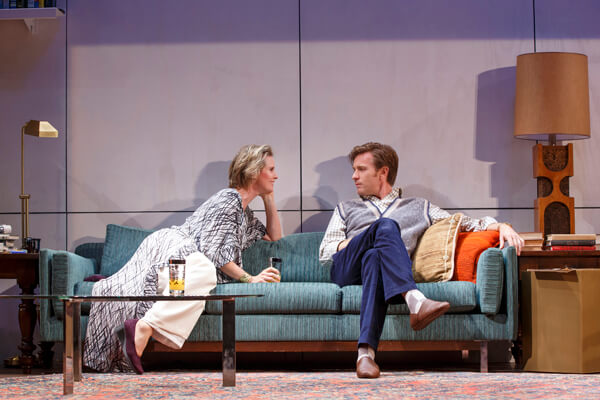“Take Me to the River” is writer/ director Matt Sobel’s auspicious debut feature about California teen Ryder’s (Logan Miller) awkward family reunion in Nebraska. Ryder wants to announce he is gay to his extended family, but his parents Cindy (Robin Weigert) and Don (Richard Schiff) express their misgivings. They think it’s best that Ryder not out himself to their conservative farm relatives. Ryder meanwhile gets himself into other trouble when an unseen incident with his cousin Molly (Ursula Parker) escalates family tensions, particularly with his uncle, Keith (Josh Hamilton).
How can a gay teen keep faith down on the farm?
Sobel, who is not gay, ratchets up the tension as his film becomes wonderfully discomfiting. The filmmaker spoke with Gay City News about making “Take Me to the River.”
GARY M. KRAMER: “Take Me to the River” is not autobiographical. How did you come to tell this story?
MATT SOBEL: I have been going to a version of that family reunion for the past 20 some years. That farmhouse is where my mother grew up and my grandmother lived until recently. It was an environment and setting I was familiar with. None of the drama was real nor were the characters based on real people, but it was triggered by a nightmare I had — being at these reunions and being accused of something inappropriate. I remember very strongly these feelings of anxiety and being unable to exonerate myself. I wanted to experiment with writing a film not so much as a metaphor of the human condition, but to capture that feeling.
GMK: Can you talk about how you created Ryder’s character?
MS: Ryder is a 17-year-old who is still searching for the person he wants to be and learning how he fits into the adult world. He’s more interested in speaking about his sexuality than living it. It was more of him on the precipice of him not knowing nearly as much as he thought about himself and the world, rather than asserting his identity on the family. We set it up in a clichéd opening that would hopefully get the audience to telegraph a different film than they are in store for. He is begrudgingly agreeing not to come out, but every point he gets the opportunity to and he backs away from it. Those situations articulate how insecure he is under the veneer of his loudmouth liberal attitude.
GMK: How did you work on creating the film’s visual style? You move effortlessly from intimate scenes to intense ones and often create an ambiguous dreamscape.
MS: It’s almost surreal, but a more accurate word is “uncanny.” I tried to put that in the writing, but I couldn’t see if it worked until we cut it together. The goal was to create a very strong and increasingly stronger dissonance between the way the film looked and the way it felt. Uncanny is familiar, but strange at the same time. This makes us uncomfortable because we’re not sure how to respond to it. It starts naturalistic and as we get more insidious and darker, it becomes more like a children’s coloring book: the color gets more primary, subtly so. By the time we get to the river, which is bucolic and pastoral and pleasant looking, the tone is ambiguous and dark.
GMK: How did you create the awkward pauses and silences in the film?
MS: In the editing I realized how much more they needed to be sculpted than I anticipated. I thought it would be pause-heavy and awkward. But if you keep that rhythm consistently, people would tire of it. You feel them because we cut out the air in the moment. The lunch table scene [with Ryder and his uncle’s family] moves quickly, and my editor took the last beat off the sentences. That made the silence in Molly’s room afterwards feel more awkward. When Ryder sings at the table, we originally had an awkward conversation about the song. But instead, we had the family change the topic of conversation, which is more awkward. You never get how the family feels about the song. He pours his heart out, and no one comments on it.
GMK: Can you talk about the symbols in the film –– the gun, the sunglasses, and the shorts?
MS: I find it funny when an article of clothing is wholly symbolic for the audience but the characters never realize they are wearing a metaphor. When we edged toward that, we wanted Ryder to realize his shorts are symbolic. His wearing the shorts over to his uncle’s house, after being made fun of for wearing them, keeps it from being heavy-handed. Writing the story, I felt that it was kind of like a fable. The sparseness of the location –– and that we don’t go back to any one of the places again –– makes it picaresque and episodic. These objects — the gun, the glasses, the shorts — help me reach that tone. The river is in the title, and it is mentioned in the film but we don’t see it until the end. It was a ring of fire he has to walk through before he finished his journey.
TAKE ME TO THE RIVER | Directed by Matt Sobel | Film Movement | Opens Mar. 18 | Landmark Sunshine Theater, 143 E. Houston St. btwn. Second & First Aves. | landmarktheatres.com



































